Ataxia is a neurological sign consisting of lack of voluntary coordination of muscle movements that can include gait abnormality, speech changes, and abnormalities in eye movements, that indicates dysfunction of parts of the nervous system that coordinate movement, such as the cerebellum.
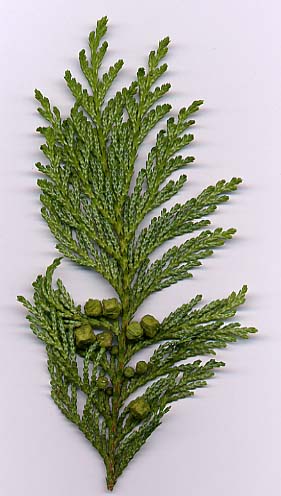
Chamaecyparis, common names cypress or false cypress, is a genus of conifers in the cypress family Cupressaceae, native to eastern Asia and to the western and eastern margins of the United States. The name is derived from the Greek khamai (χαμαί), meaning "on the earth", and kuparissos (κυπάρισσος) for "cypress".

Chamaecyparis obtusa is a species of cypress native to central Japan in East Asia, and widely cultivated in the temperate northern hemisphere for its high-quality timber and ornamental qualities, with many cultivars commercially available.
Ataxia–telangiectasia, also referred to as ataxia–telangiectasia syndrome or Louis–Bar syndrome, is a rare, neurodegenerative disease causing severe disability. Ataxia refers to poor coordination and telangiectasia to small dilated blood vessels, both of which are hallmarks of the disease. A–T affects many parts of the body:
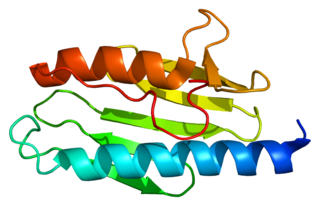
Friedreich's ataxia is an autosomal-recessive genetic disease that causes difficulty walking, a loss of coordination in the arms and legs, and impaired speech that worsens over time. Symptoms generally start between 5 and 20 years of age. Many develop hypertrophic cardiomyopathy and require a mobility aid such as a cane, walker, or wheelchair in their teens. As the disease progresses, some affected people lose their sight and hearing. Other complications may include scoliosis and diabetes.
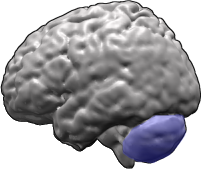
Spinocerebellar ataxia (SCA) is a progressive, degenerative, genetic disease with multiple types, each of which could be considered a neurological condition in its own right. An estimated 150,000 people in the United States have a diagnosis of spinocerebellar ataxia at any given time. SCA is hereditary, progressive, degenerative, and often fatal. There is no known effective treatment or cure. SCA can affect anyone of any age. The disease is caused by either a recessive or dominant gene. In many cases people are not aware that they carry a relevant gene until they have children who begin to show signs of having the disorder.
Sensory ataxia is both a symptom and a sign in neurology. It is a form of ataxia caused not by cerebellar dysfunction but by loss of sensory input into the control of movement.
Cerebellar ataxia is a form of ataxia originating in the cerebellum. Non-progressive congenital ataxia (NPCA) is a classical presentation of cerebral ataxias.

Spinocerebellar ataxia type 6 (SCA6) is a rare, late-onset, autosomal dominant disorder, which, like other types of SCA, is characterized by dysarthria, oculomotor disorders, peripheral neuropathy, and ataxia of the gait, stance, and limbs due to cerebellar dysfunction. Unlike other types, SCA 6 is not fatal. This cerebellar function is permanent and progressive, differentiating it from episodic ataxia type 2 (EA2) where said dysfunction is episodic. In some SCA6 families, some members show these classic signs of SCA6 while others show signs more similar to EA2, suggesting that there is some phenotypic overlap between the two disorders. SCA6 is caused by mutations in CACNA1A, a gene encoding a calcium channel α subunit. These mutations tend to be trinucleotide repeats of CAG, leading to the production of mutant proteins containing stretches of 20 or more consecutive glutamine residues; these proteins have an increased tendency to form intracellular agglomerations. Unlike many other polyglutamine expansion disorders expansion length is not a determining factor for the age that symptoms present.
Episodic ataxia (EA) is an autosomal dominant disorder characterized by sporadic bouts of ataxia with or without myokymia. There are seven types recognized but the majority are due to two recognized entities. Ataxia can be provoked by psychological stress or startle, or heavy exertion, including exercise. Symptoms can first appear in infancy. There are at least six loci for EA, of which 4 are known genes. Some patients with EA also have migraine or progressive cerebellar degenerative disorders, symptomatic of either familial hemiplegic migraine or spinocerebellar ataxia. Some patients respond to acetazolamide though others do not.

Ataxia, described by Haldeman in 1847, is an American genus of longhorn beetles of the subfamily Lamiinae, tribe Pteropliini.
Shorea obtusa, the Siamese sal, is a species of hardwood tree in the family Dipterocarpaceae, native to Southeast Asia.

Plumeria obtusa, the Singapore graveyard flower, is a species of the genus Plumeria (Apocynaceae). It is native to the Neotropics, but widely cultivated for its ornamental and fragrant flowers around the world, where suitably warm climate exists.

Cav2.1, also called the P/Q voltage-dependent calcium channel, is a calcium channel found mainly in the brain. Specifically, it is found on the presynaptic terminals of neurons in the brain and cerebellum. Cav2.1 plays an important role in controlling the release of neurotransmitters between neurons. It is composed of multiple subunits, including alpha-1, beta, alpha-2/delta, and gamma subunits. The alpha-1 subunit is the pore-forming subunit, meaning that the calcium ions flow through it. Different kinds of calcium channels have different isoforms (versions) of the alpha-1 subunit. Cav2.1 has the alpha-1A subunit, which is encoded by the CACNA1A gene. Mutations in CACNA1A have been associated with various neurologic disorders, including familial hemiplegic migraine, episodic ataxia type 2, and spinocerebellar ataxia type 6.

Chamaecyparis taiwanensis is a species of cypress, native to the mountains of Taiwan, where it grows at altitudes of 1300–2800 m.

Potassium voltage-gated channel, Shaw-related subfamily, member 3 also known as KCNC3 or Kv3.3 is a protein that in humans is encoded by the KCNC3.
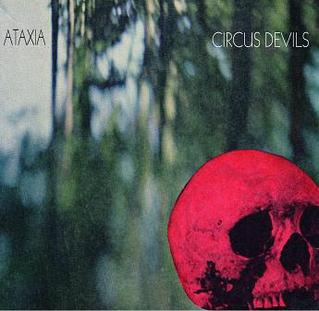
Ataxia is the sixth studio album released by the American alternative/psychedelic rock band Circus Devils on October 31, 2008. All songs on Ataxia were written and performed by Robert Pollard, Todd Tobias, and Tim Tobias.
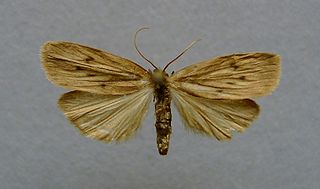
Pelosia obtusa, the small dotted footman, is a moth of the family Erebidae. The species was first described by Gottlieb August Wilhelm Herrich-Schäffer in 1847. It is found from central Europe through Asia to the Pacific Ocean.

Acetergamine is an organic chemical compound; specifically it is a derivative of ergoline, making it a member of the ergotamine family of compounds. Acetergamine currently has no mainstream uses, however its potential as an alpha-1 blocker and vasodilator has led to it being covered in several patents concerning therapies for erectile dysfunction. It has also been investigated as a treatment for cerebellar ataxia.

Truncal ataxia is a wide-based "drunken sailor" gait characterised by uncertain starts and stops, lateral deviations and unequal steps. It is an instability of the trunk and often seen during sitting. It is most visible when shifting position or walking heel-to-toe.












